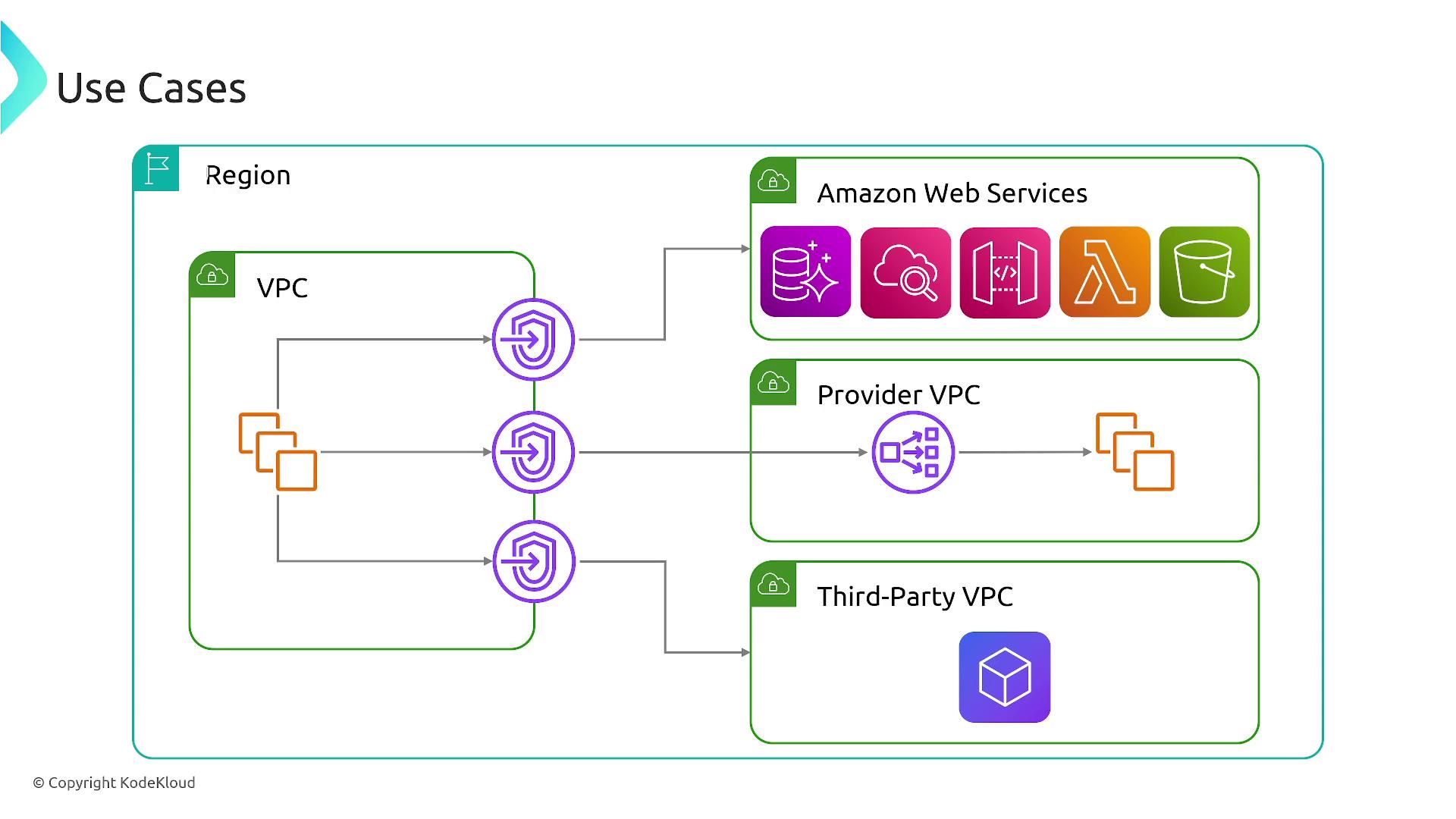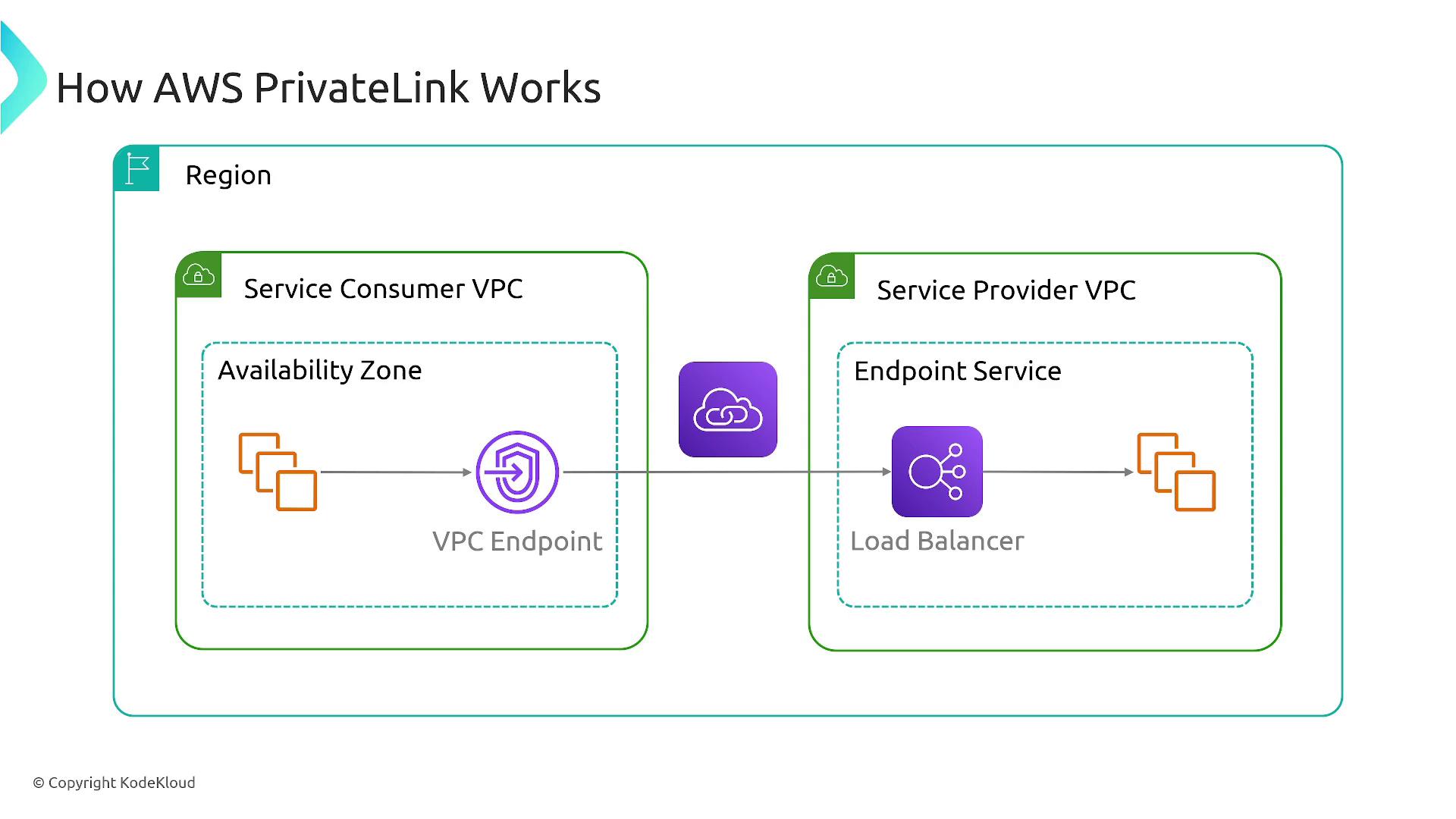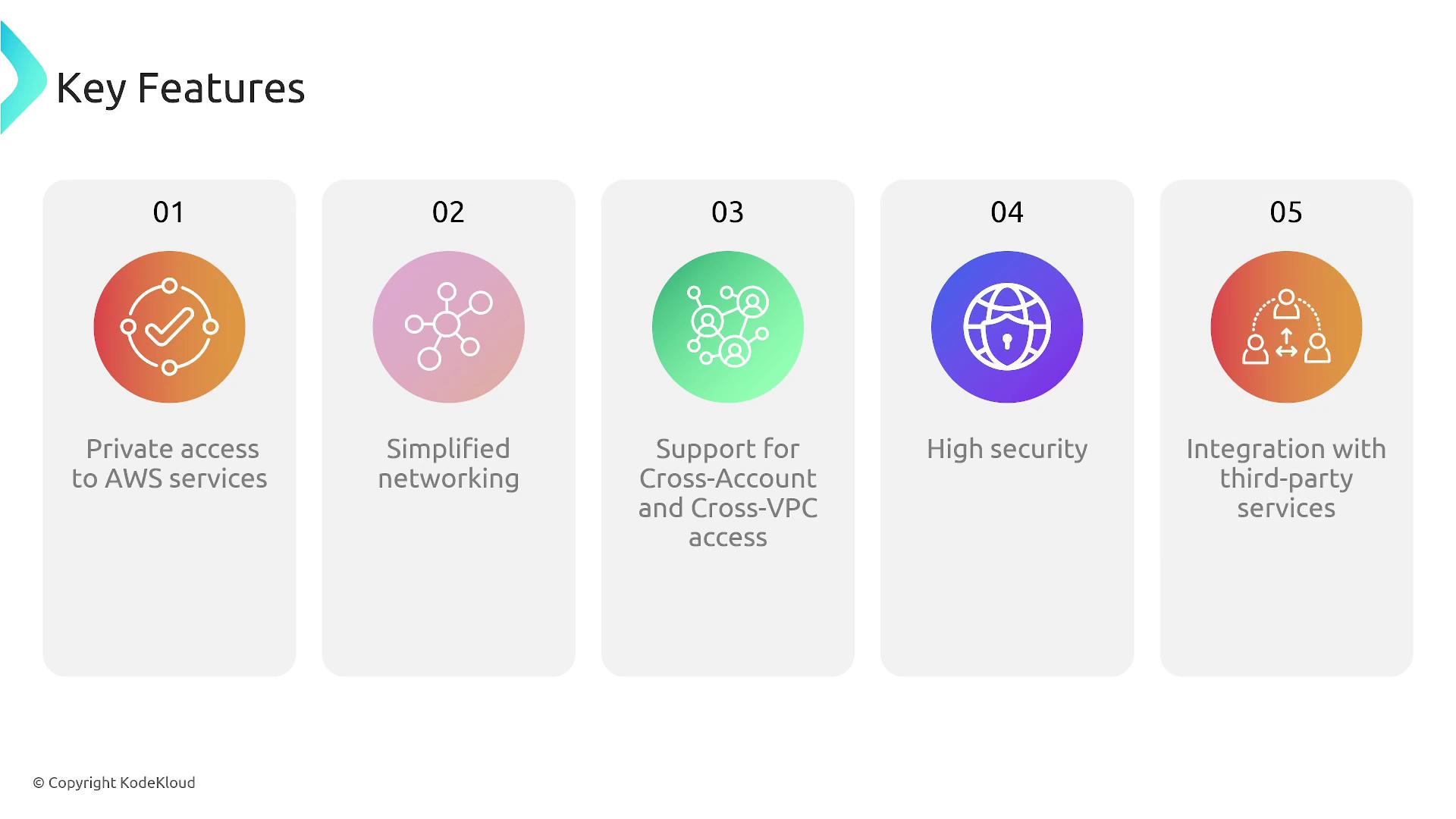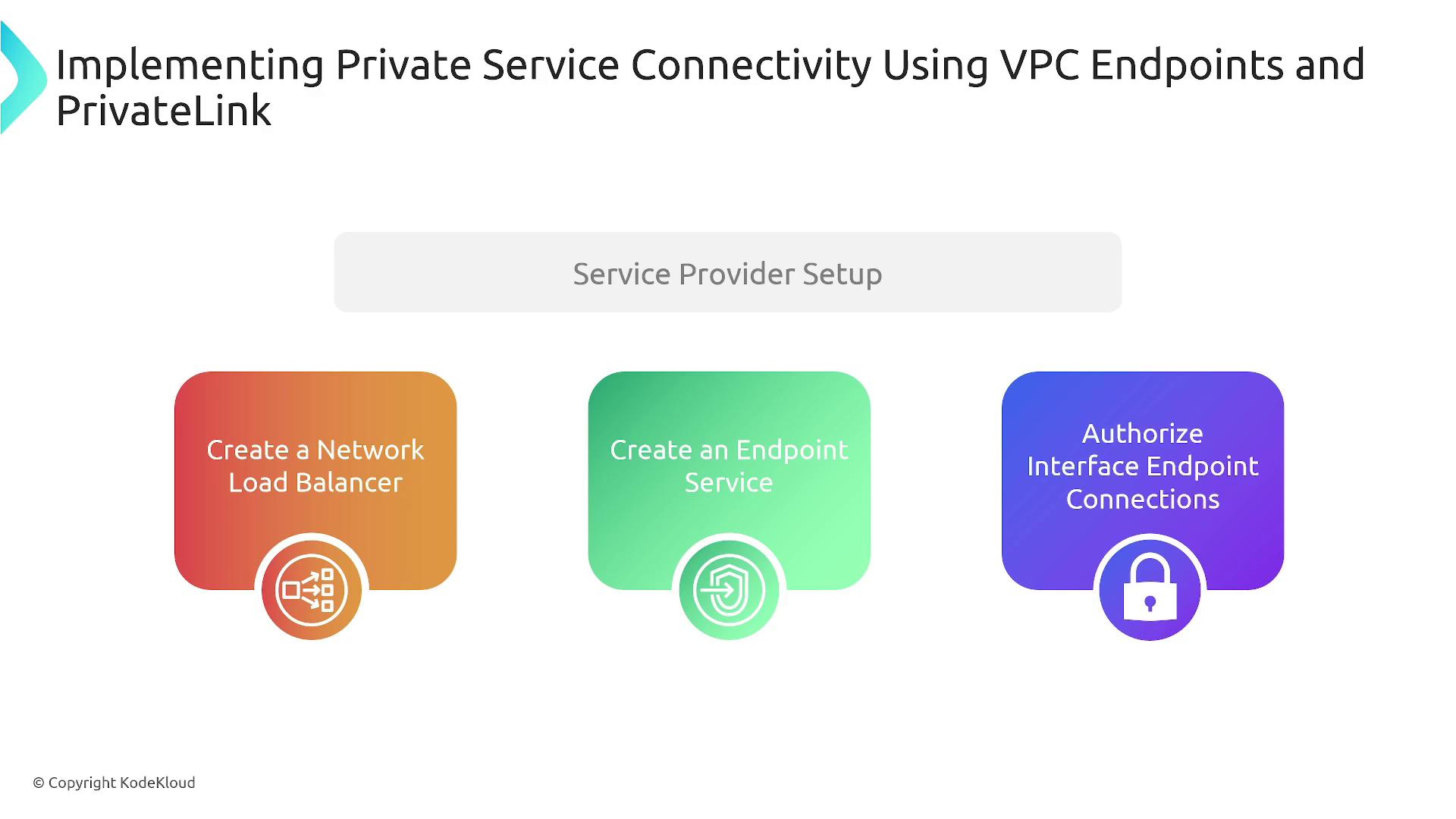AWS Certified SysOps Administrator - Associate
Domain 5 Networking and Content Delivery
Implementing Private Service Connectivity Using VPC Endpoints and PrivateLink
Welcome to this lesson on private service connectivity with VPC endpoints and PrivateLink—a topic that is essential for your exam and practical AWS implementations.
PrivateLink is the underlying service that powers VPC endpoints. Although it isn’t as visible in the AWS console as Fargate, AWS promotes PrivateLink because it ensures secure connectivity for many AWS services. Understanding this service is crucial, as it enables private communication between your VPC and various AWS or third-party services.
Consider a scenario with a VPC that contains a private subnet. An EC2 instance in your VPC might connect to a serverless AWS service, and the connection could briefly traverse the internet. This might seem counterintuitive since services like S3 or DynamoDB are indeed part of AWS’s network. However, when an EC2 instance communicates with a service that is not within your VPC, the connection routes through separate data centers, meaning that even AWS inter-service communications can momentarily exit your private network.
To maintain privacy and avoid public internet exposure, you can use VPC endpoints backed by PrivateLink. By inserting a PrivateLink endpoint between your EC2 instance and the target service, you ensure that traffic remains on AWS’s private backbone, bolstering both security and performance.
Typically, the architecture is illustrated as follows. On the left-hand side, EC2 instances connect to various AWS services. These connections can go directly to AWS data centers (hosting services without a conventional network interface) or extend to third-party or provider VPCs via a VPC endpoint.

For example, if you need to connect to a scalable data processing service like Databricks—for data transformation, extraction, loading, and big data processing hosted on AWS—you would use a VPC interface endpoint powered by PrivateLink to keep your traffic private, rather than letting it traverse the public internet.

The VPC endpoint not only provides private access to AWS services and third-party providers but also eliminates the need for extra networking components like VPNs or NAT gateways. It supports cross-account and cross-VPC access, which considerably reduces the attack surface by keeping traffic confined to AWS’s secure backbone.

In the AWS console, this service appears as a "VPC endpoint" under the VPC section. When you are configuring a private service as a provider, the typical steps include creating a network load balancer, setting up an endpoint service, and authorizing which consumers can connect to your endpoint service.

Exam Tip
A common exam question may ask: “How do I ensure my traffic stays off the internet when connecting to an AWS service such as S3 from an EC2 instance?” The answer is to use a VPC interface endpoint.
Below is a simplified representation of the endpoint format:
com.amazonaws.vpce.[region].[service-name]
com.amazonaws.us-east-1.s3
com.amazonaws.us-east-2.ec2
com.amazonaws.us-west-1.rds
It is important to note that while the example above represents a VPC interface endpoint, AWS also offers the older VPC gateway endpoint. However, the VPC gateway endpoint is limited to use with S3 and DynamoDB, whereas the VPC interface endpoint supports nearly every AWS service.
In summary, VPC endpoints—also known as interface endpoints—enable secure, private connectivity to AWS services and third-party offerings without exposing your traffic to the public internet. This approach not only simplifies your network architecture but also enhances security by keeping your data within AWS’s private, reliable network.
We hope this lesson provides a clear understanding of how to implement private service connectivity using VPC endpoints and PrivateLink.
Watch Video
Watch video content